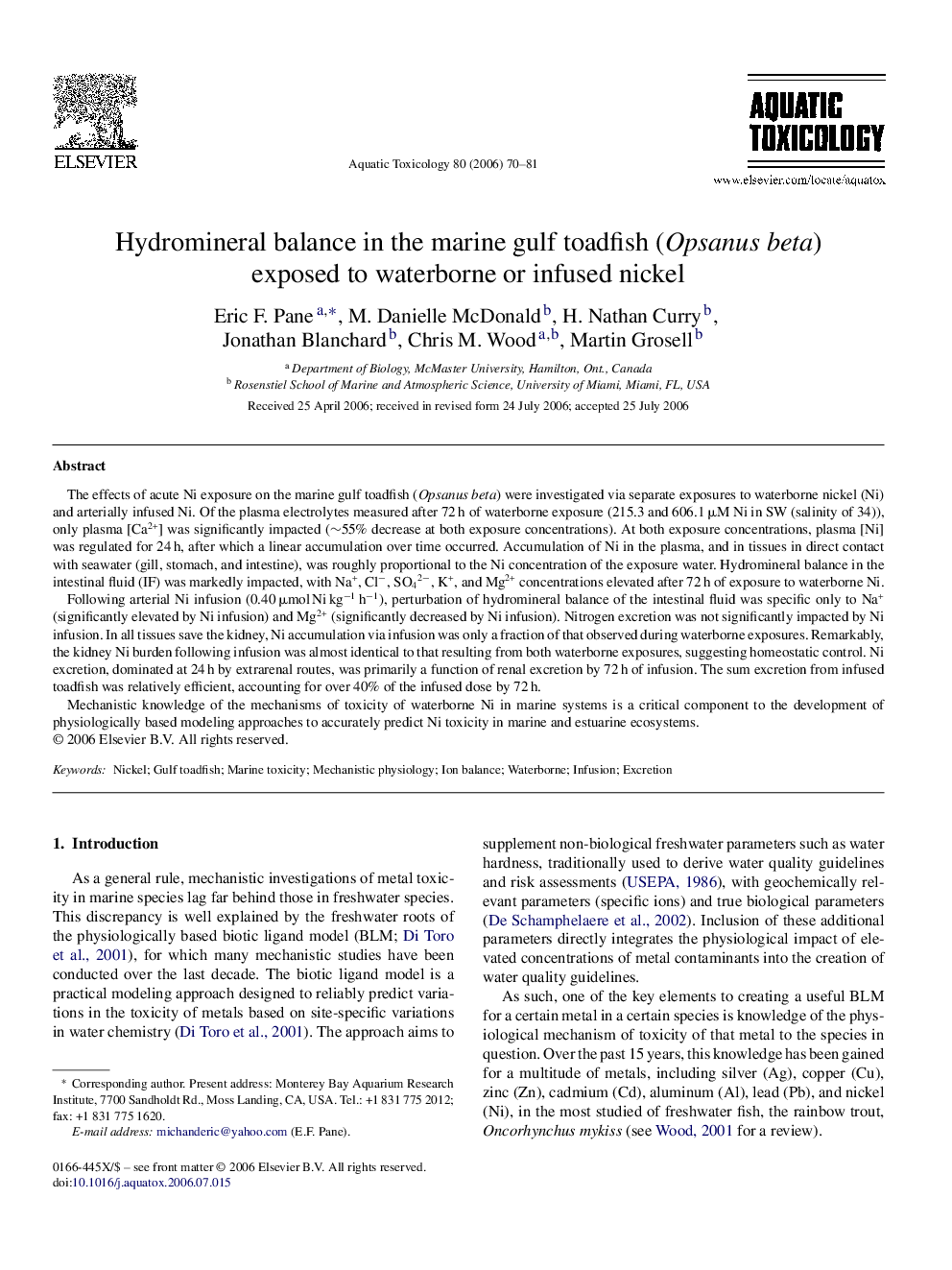| کد مقاله | کد نشریه | سال انتشار | مقاله انگلیسی | نسخه تمام متن |
|---|---|---|---|---|
| 4531296 | 1324767 | 2006 | 12 صفحه PDF | دانلود رایگان |

The effects of acute Ni exposure on the marine gulf toadfish (Opsanus beta) were investigated via separate exposures to waterborne nickel (Ni) and arterially infused Ni. Of the plasma electrolytes measured after 72 h of waterborne exposure (215.3 and 606.1 μM Ni in SW (salinity of 34)), only plasma [Ca2+] was significantly impacted (∼55% decrease at both exposure concentrations). At both exposure concentrations, plasma [Ni] was regulated for 24 h, after which a linear accumulation over time occurred. Accumulation of Ni in the plasma, and in tissues in direct contact with seawater (gill, stomach, and intestine), was roughly proportional to the Ni concentration of the exposure water. Hydromineral balance in the intestinal fluid (IF) was markedly impacted, with Na+, Cl−, SO42−, K+, and Mg2+ concentrations elevated after 72 h of exposure to waterborne Ni.Following arterial Ni infusion (0.40 μmol Ni kg−1 h−1), perturbation of hydromineral balance of the intestinal fluid was specific only to Na+ (significantly elevated by Ni infusion) and Mg2+ (significantly decreased by Ni infusion). Nitrogen excretion was not significantly impacted by Ni infusion. In all tissues save the kidney, Ni accumulation via infusion was only a fraction of that observed during waterborne exposures. Remarkably, the kidney Ni burden following infusion was almost identical to that resulting from both waterborne exposures, suggesting homeostatic control. Ni excretion, dominated at 24 h by extrarenal routes, was primarily a function of renal excretion by 72 h of infusion. The sum excretion from infused toadfish was relatively efficient, accounting for over 40% of the infused dose by 72 h.Mechanistic knowledge of the mechanisms of toxicity of waterborne Ni in marine systems is a critical component to the development of physiologically based modeling approaches to accurately predict Ni toxicity in marine and estuarine ecosystems.
Journal: Aquatic Toxicology - Volume 80, Issue 1, 25 October 2006, Pages 70–81